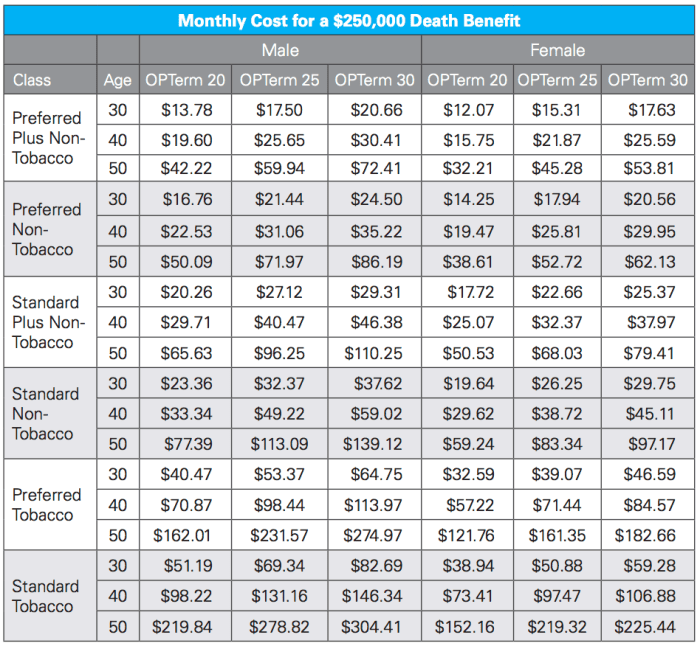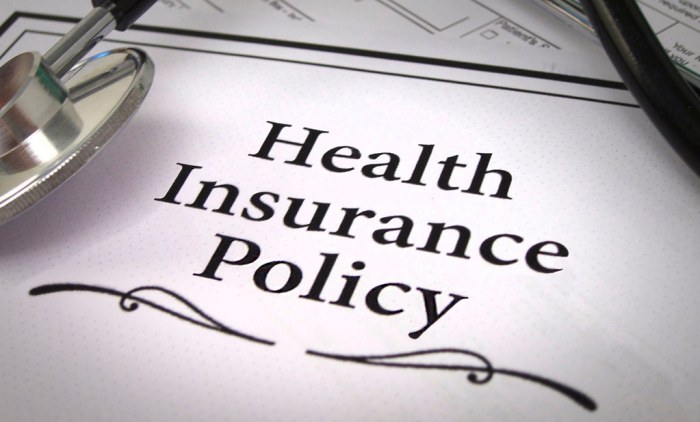Professional Indemnity Insurance for Professionals Explained
Professional Indemnity Insurance serves as a crucial safety net for professionals across various fields, safeguarding them against potential claims of negligence or malpractice. In today’s increasingly litigious environment, this type of insurance is not just an added benefit but a necessity for those providing professional services, ensuring peace of mind while navigating their careers.
Whether you’re an architect, consultant, or medical professional, understanding the complexities of Professional Indemnity Insurance is vital. This insurance protects your financial interests, particularly in cases where a client alleges that your professional advice or services have led to their loss. By familiarizing yourself with the policy’s key components, coverage areas, and claim processes, you can make informed decisions that ultimately protect your reputation and livelihood.
Understanding Professional Indemnity Insurance
Source: fotor.com
Professional Indemnity Insurance (PII) serves as a crucial safety net for professionals, protecting them against claims of negligence or inadequate advice that may arise in the course of their work. This insurance is particularly significant in fields where expertise and judgment are paramount, as it helps mitigate financial losses resulting from legal disputes.Professional Indemnity Insurance offers coverage for various types of professionals.
Those who typically require this insurance span across multiple industries, including but not limited to:
Types of Professionals Requiring Professional Indemnity Insurance
The following categories of professionals often seek PII to safeguard their practices against potential claims:
- Medical Practitioners – Doctors, surgeons, and other healthcare professionals need PII to cover claims related to malpractice or misdiagnosis.
- Legal Professionals – Lawyers and solicitors require coverage against claims arising from professional negligence or breach of duty.
- Consultants – Business consultants, IT consultants, and management advisors protect themselves against claims of providing flawed advice.
- Accountants – Financial professionals need insurance to cover claims linked to errors in financial reporting or tax advice.
- Architects and Engineers – These professionals seek coverage for claims related to construction defects or design flaws.
- Real Estate Agents – They require PII to safeguard against claims arising from misleading property representations or transactional errors.
The key components of a Professional Indemnity Insurance policy define the scope and limitations of the coverage provided. Understanding these components is essential for professionals seeking to tailor their policies effectively.
Key Components of a Professional Indemnity Insurance Policy
A well-structured PII policy generally includes the following critical elements:
- Coverage Limits – This specifies the maximum amount the insurer will pay for a claim, which can vary significantly based on the nature of the profession.
- Policy Exclusions – These are specific situations or types of claims that are not covered under the policy, such as intentional misconduct or criminal acts.
- Retroactive Date – This indicates the point in time from which claims can be made, ensuring coverage for past services rendered.
- Claims Made Basis – Most PII policies operate on a claims-made basis, meaning that coverage applies only if the policy is active when the claim is made, regardless of when the incident occurred.
- Defense Costs – This component covers the legal expenses incurred while defending against a claim, which can be separate from the indemnity amount.
“Professional Indemnity Insurance is not just a safety measure; it is a critical component of professional accountability.”
Understanding the significance and components of Professional Indemnity Insurance ensures that professionals are well-prepared to handle potential liabilities that may arise in their fields, ultimately safeguarding their practice and reputation.
Importance of Professional Indemnity Insurance
Professional Indemnity Insurance (PII) plays a critical role in risk management for individuals and businesses providing professional services. It offers a safety net against claims made by clients for negligent acts, errors, or omissions in the services provided. Without this coverage, professionals risk facing significant financial losses, reputational damage, and even the potential for career-ending legal disputes.Neglecting to secure Professional Indemnity Insurance can lead to severe financial repercussions.
The costs associated with defending against claims, settlements, and potential damages can be astronomical. For instance, a single claim could easily exceed tens or even hundreds of thousands of dollars, which could cripple an unprotected business. The implications of such financial strain extend beyond immediate costs; they can also impact future opportunities, partnerships, and client trust.
Scenarios Demonstrating the Necessity of Professional Indemnity Insurance
Understanding real-world scenarios where Professional Indemnity Insurance proves invaluable underscores its importance for professionals. Here are a few illustrative examples:
- Consulting Services: A management consultant provides strategic advice to a client. If the client claims that the consultant’s recommendations resulted in financial losses, the consultant could face a lawsuit for negligence. Without PII, the consultant would be responsible for all legal fees and potential settlements.
- Legal Professionals: Lawyers often encounter claims of malpractice. If a lawyer misses a critical filing deadline, leading to a lost case, the client may seek damages. PII would cover the lawyer’s legal defense and any resulting settlements or judgments.
- Architects and Engineers: Design professionals can be held liable for structural failures due to design errors. If a building collapses because of faulty plans, the architect could face claims for damages. PII helps cover the substantial costs associated with defending against such claims and compensating affected parties.
- IT Service Providers: A software developer may inadvertently introduce a bug that compromises client data security. If a client suffers a data breach and incurs losses, the developer could be sued for damages. PII safeguards against the financial fallout of such incidents.
“Professional Indemnity Insurance protects not just your finances, but also your professional reputation.”
Coverage and Exclusions

Source: choosingtherapy.com
Professional Indemnity Insurance (PII) provides essential protection for professionals against claims made for negligence, errors, or omissions in the provision of their services. Understanding the common coverage areas and typical exclusions is vital for anyone considering this type of insurance, as it helps professionals make informed decisions about their risk management strategies.Coverage provided by Professional Indemnity Insurance can vary widely among insurers, but several common areas of protection are generally included.
These coverage areas aim to safeguard professionals from the financial repercussions of legal claims and associated costs.
Common Coverage Areas
The following are typical coverage areas included in Professional Indemnity Insurance policies:
- Negligence Claims: Protection against claims alleging that professional services were rendered negligently, leading to client financial loss.
- Legal Costs: Coverage for legal expenses incurred while defending against claims, including court fees and settlement costs.
- Defamation Claims: Protection from claims arising from statements made about clients or third parties that could be deemed defamatory.
- Infringement Claims: Coverage for claims involving the infringement of intellectual property rights, such as copyrights or trademarks.
- Contractual Liability: Protection for liabilities arising from breaches of contracts related to professional services rendered.
These coverage areas ensure that professionals can manage the risks associated with their work more effectively, allowing them to focus on providing quality services to their clients.
Typical Exclusions
While Professional Indemnity Insurance offers extensive protection, there are common exclusions that policyholders should be aware of. Understanding these exclusions is crucial for professionals to know the limitations of their coverage.
- Intentional Wrongdoing: Claims arising from deliberate acts or omissions, such as fraud or criminal activities, are typically excluded.
- Employment Disputes: Claims related to employment issues, such as wrongful termination, are generally not covered.
- Contractual Liabilities: Liabilities that arise solely from contractual obligations (unless explicitly covered) are often excluded.
- Pre-Existing Claims: Any claims or incidents that occurred before the policy start date are usually excluded.
- Cyber Liability: Incidents related to data breaches or cyberattacks may not be covered unless specifically included in the policy.
Being aware of these exclusions helps professionals to take additional measures to mitigate risks that are not covered by their PII policy.
Comparison of Coverage Options
When considering Professional Indemnity Insurance, it’s essential to compare the coverage options provided by different insurers. Each insurer may offer unique features, limits, and exclusions which can significantly impact the level of protection offered.
| Insurer | Coverage Limit | Premium Range | Key Features |
|---|---|---|---|
| Insurer A | Up to $1 million | $500 – $1,200 | Includes cyber liability, worldwide coverage |
| Insurer B | Up to $2 million | $700 – $1,500 | Higher limits for legal costs, extended retroactive cover |
| Insurer C | Up to $5 million | $1,000 – $2,500 | Specialized coverage for niche industries, flexible payment plans |
Evaluating these options helps professionals select a policy that best suits their specific needs and risk exposure, ensuring they maintain adequate protection as they conduct their business activities.
Claim Process for Professional Indemnity Insurance
Filing a claim under a Professional Indemnity Insurance policy can feel daunting, but understanding the process can simplify it significantly. Each step in the claims process is designed to ensure that your claim is assessed fairly and efficiently. This section Artikels the essential steps and documentation needed to file a claim successfully.
Steps Involved in Filing a Claim
The claims process typically follows a structured path to ensure that all necessary information is collected and reviewed. Understanding these steps can help you navigate the process smoothly.
1. Notification of Claim
The first step involves notifying your insurer about the claim as soon as you become aware of the situation that could lead to a claim. This should ideally be done in writing to create a formal record.
2. Initial Assessment
After the notification, the insurer will conduct an initial assessment to determine whether the claim falls within the terms of the policy.
3. Claim Documentation
You will be required to provide specific documentation to support your claim, which may include all relevant correspondence, contracts, and other pertinent records.
4. Investigation
The insurer will investigate the claim thoroughly. This could involve interviewing you, reviewing your documentation, and possibly consulting with experts.
5. Decision
After evaluating the information, the insurer will make a decision regarding the claim. You will receive notification of their decision along with the reasons for it.
6. Settlement
If the claim is approved, the insurer will proceed to settle the claim. This may involve negotiation on the amount payable if there are any disputes.
Documentation Required to Support a Claim
Providing accurate and comprehensive documentation is critical to the success of your claim. Here’s a list of essential documents typically required:
- Detailed incident report outlining the claim circumstances.
- Correspondence related to the incident, including emails and letters.
- Client contracts or engagement letters relevant to the claim.
- Invoices or receipts for incurred costs or damages.
- Any legal documents received, such as complaints or summons.
- Statements or evidence from third parties, which may include expert reports.
Tips for Navigating the Claims Process
Successfully navigating the claims process requires careful attention to detail and proactive communication. Here are some tips to enhance your experience:
Maintain Clear Records
Keep a detailed record of all communications with your insurer, including dates, times, and the names of representatives you speak with. This will be invaluable if any disputes arise.
Be Prompt
Timeliness is essential. Submit your claim and supporting documents as soon as possible to avoid delays.
Provide Complete Information
Ensure that all documentation is complete and accurately reflects the incident. Incomplete information can lead to delays or denial of the claim.
Seek Professional Advice
If the claim is complex or involves significant amounts, consider seeking legal advice or assistance from a claims professional.
Follow Up Regularly
Regular follow-ups can help keep your claim moving through the process. Don’t hesitate to reach out to your insurer for updates.
“Effective communication and documentation are key to a successful claims process in Professional Indemnity Insurance.”
Premium Determinants and Costs
Understanding the cost structure of Professional Indemnity Insurance (PII) is essential for professionals looking to safeguard their practice. The premiums for PII can vary significantly based on several factors, each of which plays a crucial role in determining the final cost. Several key factors influence the cost of Professional Indemnity Insurance premiums. These include the type of profession, the level of coverage required, the claims history of the individual or firm, and the geographic location in which they operate.
Each of these elements contributes to the insurer’s assessment of risk and, consequently, the premium that must be paid.
Factors Influencing Premium Costs
Understanding the specific factors that affect premium costs can help professionals make informed decisions when obtaining insurance. The following points Artikel the primary determinants:
- Type of Profession: Certain professions, such as healthcare and legal services, often face higher risks of claims, leading to higher premiums.
- Coverage Amount: Higher coverage amounts will generally result in higher premiums, as the potential liability is greater.
- Claims History: A history of previous claims can increase premiums, as insurers view this as an indicator of future risk.
- Professional Experience: More experienced professionals may benefit from lower premiums due to a lower perceived risk.
- Geographic Location: Areas with higher litigation rates can lead to increased insurance costs due to the greater likelihood of claims.
Discounts and Incentives Offered by Insurers
Many insurers provide various discounts or incentives that can help reduce the overall cost of Professional Indemnity Insurance. Understanding these options can be beneficial for professionals looking to save on their premiums. Here are some common incentives:
- No Claims Discount: If a professional has not made any claims during a specified period, they may receive a discount on their premium.
- Membership Associations: Being part of certain professional associations can qualify individuals for group discounts.
- Risk Management Training: Completing recognized training programs related to risk management may lead to reduced premiums.
- Multi-Policy Discount: Insurers may offer a discount if the individual holds multiple policies with the same company.
Average Costs of Professional Indemnity Insurance by Profession
The average costs of Professional Indemnity Insurance can differ widely across various professions. The following table provides a comparison of average annual premiums for different sectors, highlighting how profession type influences insurance costs.
| Profession | Average Annual Premium |
|---|---|
| Healthcare Professionals | £1,000 – £5,000 |
| Legal Practitioners | £1,200 – £3,000 |
| Consultants | £800 – £2,500 |
| IT Professionals | £500 – £1,500 |
| Architects | £1,000 – £3,000 |
Legal Implications and Responsibilities

Source: wallpapers.com
Professionals across various industries face a myriad of legal obligations, particularly concerning Professional Indemnity Insurance (PII). This insurance not only acts as a safety net for professionals but also functions as a crucial element of their legal responsibilities. Understanding these obligations is essential for ensuring compliance and safeguarding against potential liabilities.Legal obligations surrounding Professional Indemnity Insurance are often dictated by the nature of the profession and the regulatory environment.
Many professions, such as healthcare, legal services, and financial advisory, are required by law or industry regulations to maintain adequate PII coverage. This requirement is designed to protect clients and maintain the integrity of the profession. Failure to secure appropriate coverage can have severe implications, including penalties or the loss of professional licenses.
Interactions with Other Forms of Liability Insurance
Professional Indemnity Insurance plays a unique role in the broader landscape of liability insurance. While it specifically covers errors and omissions in the professional service provided, it often interacts with other types of liability coverage. Understanding these interactions is crucial for professionals to ensure comprehensive protection.For instance, general liability insurance generally covers bodily injury or property damage, while PII focuses on professional mistakes or negligence.
It’s imperative for professionals to assess their insurance portfolio to avoid coverage gaps. In some cases, professionals may need both PII and general liability insurance to ensure full coverage against various risk exposures.
| Type of Insurance | Coverage Focus |
|---|---|
| Professional Indemnity Insurance | Errors and omissions in professional services |
| General Liability Insurance | Bodily injury and property damage |
| Product Liability Insurance | Defects in products sold or supplied |
Legal Ramifications of Inadequate Coverage
Not securing adequate Professional Indemnity Insurance can lead to significant legal ramifications for professionals. In situations where claims arise, insufficient coverage may result in substantial financial loss and legal penalties. Professionals may face lawsuits that could deplete their personal finances, as they could be held personally liable for any damages awarded to a claimant. Furthermore, regulatory bodies may impose fines or revoke licenses for failing to comply with mandated insurance requirements.
“Without adequate coverage, professionals expose themselves to financial ruin and reputational damage.”
The real-life case of a financial advisor highlights these risks. In this instance, a client sued for mismanagement of funds, and the advisor, lacking adequate PII, faced out-of-pocket expenses exceeding $100,000. This example underscores the critical nature of maintaining appropriate Professional Indemnity Insurance to mitigate such risks effectively.
Choosing the Right Policy
Selecting the appropriate Professional Indemnity Insurance policy is crucial for safeguarding your professional practice. Given the array of options available in the market, it’s essential to approach the selection process methodically to ensure that the policy aligns with your specific needs and offers adequate coverage.To effectively evaluate different Professional Indemnity Insurance policies, consider several key factors that can significantly influence your decision.
It’s not just about the premium; the breadth of coverage, exclusions, and the financial stability of the insurer are equally important.
Framework for Evaluating Policies
When assessing potential policies, a structured framework can streamline the decision-making process. Here are essential criteria to consider:
- Coverage Scope: Examine what is covered under the policy. Ensure that it includes essential areas relevant to your profession, such as negligence, errors, and omissions.
- Exclusions: Understand the exclusions listed in the policy. Certain conditions or actions may not be covered, which can leave you vulnerable.
- Claims Process: Investigate the claims process and how the insurer handles claims. A straightforward process can save time and stress when you need assistance.
- Premium Costs: Compare premium prices, but also look at the value provided. A higher premium might be justified if it offers superior coverage.
- Insurer Reputation: Research the insurer’s financial stability and customer service record. Reviews and ratings can provide insight into their reliability.
Important Considerations Before Selecting an Insurance Provider
Before making a final selection, professionals should contemplate the following aspects to ensure they are making an informed choice:
- Specialization: Determine if the provider specializes in your industry. Specialized insurers often understand the unique risks associated with specific professions.
- Policy Flexibility: Look for options that allow customization of coverage to suit your unique needs.
- Additional Services: Some providers offer additional services, such as risk management advice or legal support, which can be beneficial.
- Long-Term Relationship: Consider the potential for a long-term relationship with the insurer. A strong partnership can result in better terms and services over time.
Checklist for Reviewing Potential Policies
A comprehensive checklist can aid professionals in the policy review process:
- Verify coverage limits and sub-limits for various types of claims.
- Assess the adequacy of legal defense costs included in the policy.
- Check if the policy includes retroactive cover for past work.
- Review the renewal terms and conditions.
- Ensure there are no hidden fees within the policy.
- Confirm the payment terms, including options for installment payments.
Future Trends in Professional Indemnity Insurance
The landscape of Professional Indemnity Insurance (PII) is continuously evolving, influenced by various emerging trends across industries. Understanding these trends is essential for professionals seeking to protect themselves against liabilities that could arise from their services. This segment delves into the significant changes that are shaping the future of PII, including technological advancements, industry-specific demands, and potential regulatory shifts.
Impact of Technology on Professional Indemnity Insurance
Technology is rapidly transforming the PII sector, introducing new challenges and opportunities. Professionals are increasingly reliant on digital platforms, which can lead to unique risks requiring tailored coverage. Insurers are leveraging technology to better assess these risks and streamline the insurance process.One notable trend is the integration of artificial intelligence (AI) and machine learning (ML) in underwriting and claims processing.
These technologies enable insurers to analyze vast amounts of data, leading to more accurate risk assessments and personalized policy offerings. For instance, an architect utilizing 3D modeling software may face different risks than one who relies solely on traditional methods. Insurers can now customize policies based on these factors, providing more relevant protection.Additionally, the rise of telecommuting and remote work arrangements has necessitated a reevaluation of PII policies.
As professionals operate from various locations, including their homes, insurers must consider the implications of this shift on liability and coverage needs. The need for seamless digital access to policy information and claims processes is becoming increasingly important, prompting insurers to invest in user-friendly online platforms.
Industry-Specific Trends Influencing Professional Indemnity Insurance
Different sectors exhibit unique trends that impact PII requirements. Understanding these industry-specific dynamics can help professionals identify the necessary coverage for their operations. Here are some key trends:
- Health Sector: The rise of telemedicine has introduced new liability concerns, as practitioners provide services remotely. Insurers are adapting by offering specialized policies that address these risks, ensuring healthcare professionals are adequately covered.
- Technology Sector: Cybersecurity threats are on the rise, prompting tech companies to seek PII that includes coverage for data breaches. Insurers are responding by developing policies that encompass these emerging risks.
- Consulting Firms: As consultants increasingly rely on data analytics, the risk of errors in analysis or advice becomes critical. PII policies are evolving to include protection against claims arising from miscalculations or misuse of data.
Each of these sectors showcases the necessity for PII that adapts to their specific challenges. Insurers who understand these nuances can create more effective policies that cater to evolving risks.
Potential Regulatory Changes and Implications
The regulatory landscape surrounding Professional Indemnity Insurance is also subject to change, which could have significant implications for professionals. Anticipated regulatory changes may include:
- Increased Disclosure Requirements: Regulators may mandate more detailed disclosures from insurers regarding policy terms and exclusions, enhancing transparency for professionals seeking coverage.
- Standardization of Policies: Efforts may be made to standardize PII policies across industries to ensure consistent coverage levels and expectations, simplifying the purchasing process for professionals.
- Enhanced Consumer Protection: New regulations could focus on protecting consumers against unfair practices in the PII market, potentially leading to stricter oversight of insurers and their marketing practices.
These regulatory developments will likely affect how insurers operate and how professionals select and utilize their PII. Staying informed about these changes is essential for ensuring compliance and making informed decisions regarding coverage.
“Understanding the evolving landscape of Professional Indemnity Insurance is crucial for professionals aiming to safeguard their interests in an unpredictable environment.”
Final Conclusion: Professional Indemnity Insurance
In summary, Professional Indemnity Insurance is an essential component for professionals looking to mitigate risks associated with their services. As industries evolve and new challenges arise, staying informed about coverage options, legal responsibilities, and emerging trends will empower you to navigate your professional life with confidence. Ultimately, investing in this insurance not only secures your practice but also enhances your credibility in the eyes of clients.
FAQ
What is Professional Indemnity Insurance?
Professional Indemnity Insurance is coverage that protects professionals against claims of negligence or malpractice arising from their services.
Who needs Professional Indemnity Insurance?
Professionals such as lawyers, doctors, architects, and consultants typically require this insurance to protect against potential claims.
How does the claim process work?
The claim process involves notifying your insurer, providing necessary documentation, and working with them to resolve the claim efficiently.
What factors affect the cost of premiums?
Factors include the type of profession, level of coverage, claims history, and the specific risks associated with your services.
What are common exclusions in these policies?
Common exclusions may include intentional misconduct, contractual liabilities, and claims arising from non-professional services.





